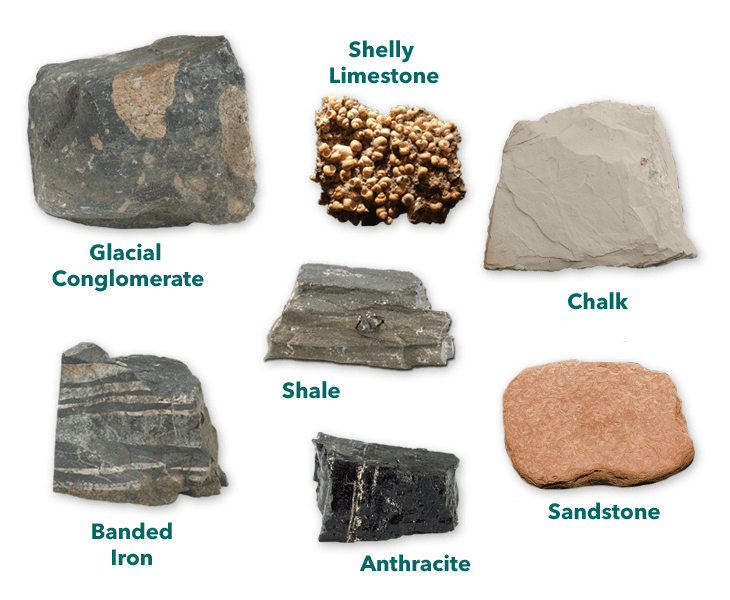
3 Types of Rock Igneous, Sedimentary & Metamorphic AMNH
Getty Images By Andrew Alden Updated on June 02, 2019 Igneous rocks are those that form via the process of melting and cooling. If they erupt from volcanoes onto the surface as lava, they are called extrusive rocks. By contrast, Intrusive rocks are formed from magma that cools underground.

The Three Types of Rocks
The Three Types of Rocks. Rocks are classified based on how they were formed. The three major types are igneous, sedimentary, and metamorphic rocks. This classification is essential to geologists as it provides critical information about the history of specific regions on Earth. These rocks change forms via the rock cycle.

Types of Rocks Igneous, Sedimentary & Metamorphic » Selftution
The three types of rocks are: Igneous Rocks Metamorphic Rocks Sedimentary Rocks Igneous Rocks The first type of rock on this list are the igneous type of rocks. Igneous rocks are more than just a cool name. They're actually cool in another way. Igneous rocks are actually cooled and hardened magma.
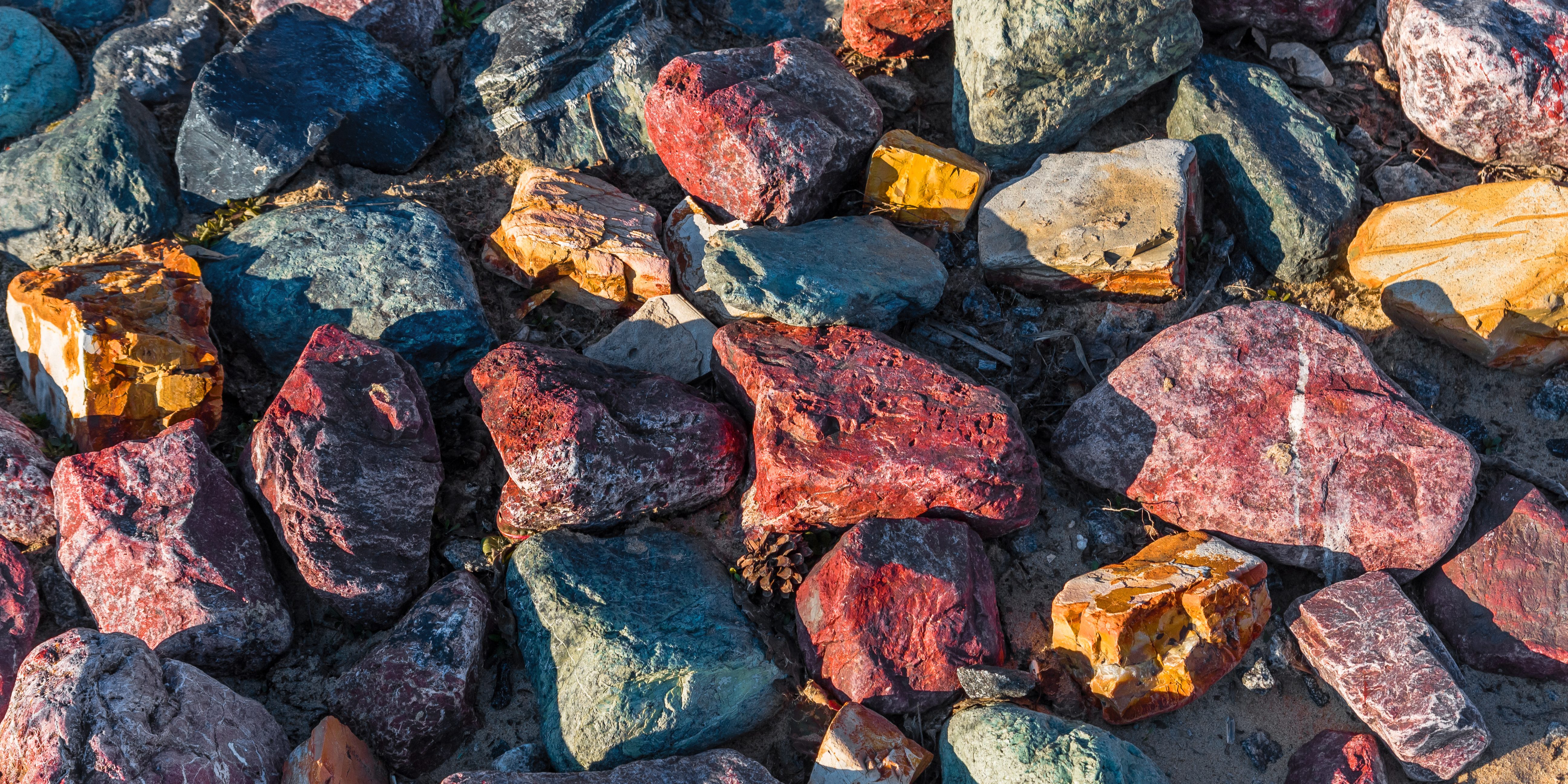
Types of Rocks Crusher Rental & Sales
There are three different types of rocks. You should know all about sedimentary, igneous and metamorphic rocks, so have a look at these pictures and see if you can identify each specimen. Classify these rocks. Try and work out whether they are sedimentary, igneous or metamorphic. Think about how they were formed. Basalt Sheared gneiss Limestone
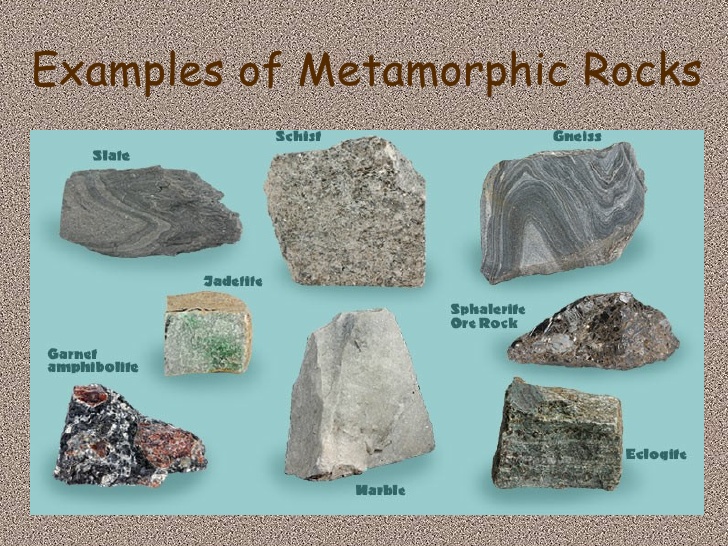
GSIAS BLOGS ROCKS FORMATIONS IN THE EARTH CRUST AND THEIR TYPES
01 of 18 Amphibolite Andrew Alden Amphibolite is a rock composed mostly of amphibole minerals. Usually, it's a hornblende schist like this as hornblende is the commonest amphibole. Amphibolite forms when basaltic rock is subjected to higher temperatures between 550 C and 750 C) and slightly greater pressure range than that which yields greenschist.
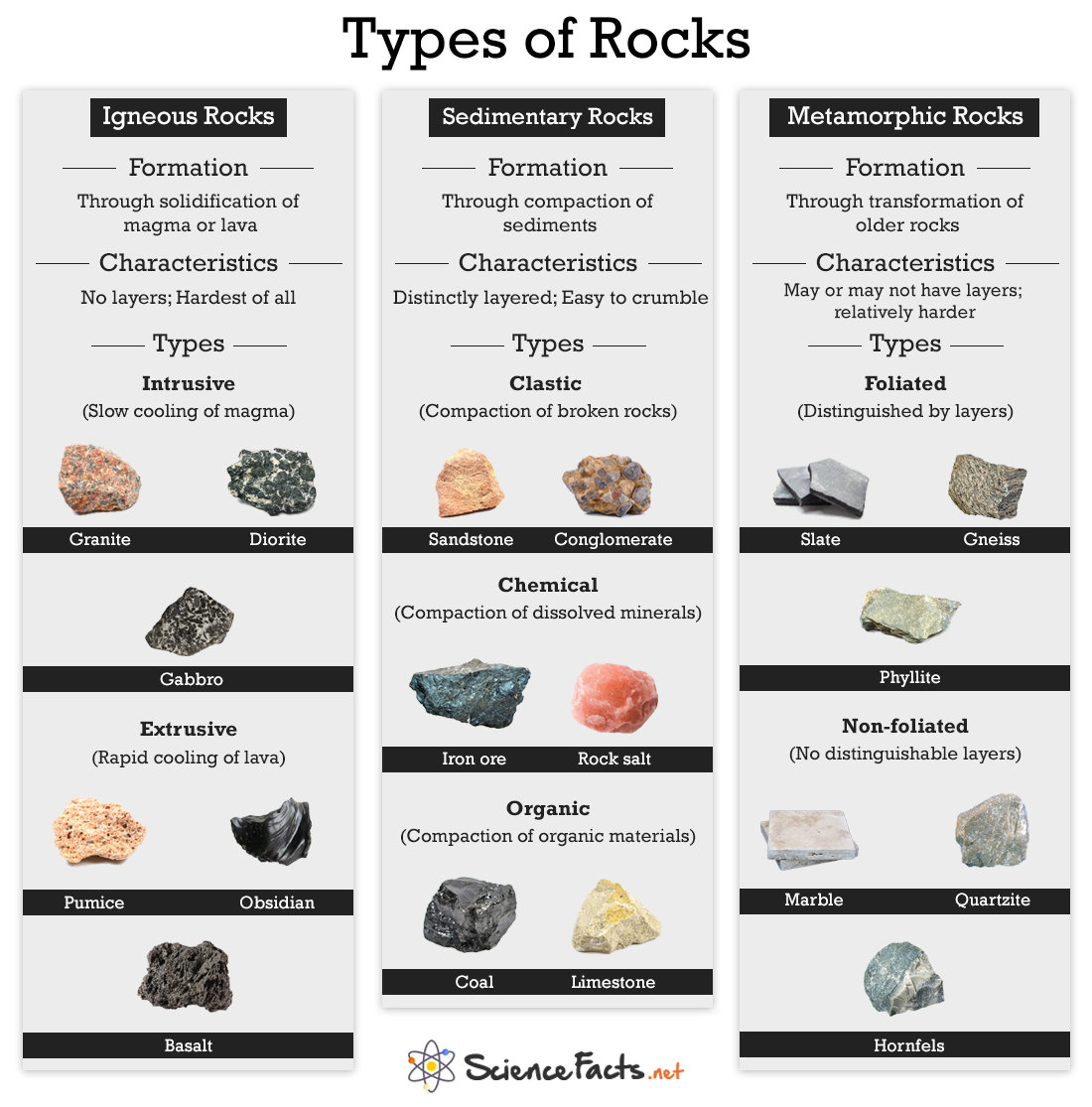
Types of Rocks Science Facts
Sedimentary rocks are some of the most interesting and widespread rocks found in nature. When most people think of sedimentary rocks images of colorful sandstone layers in picturesque canyons come to mind, but there is a lot more to them than that. There are many different types of sedimentary rocks, and if you know what.
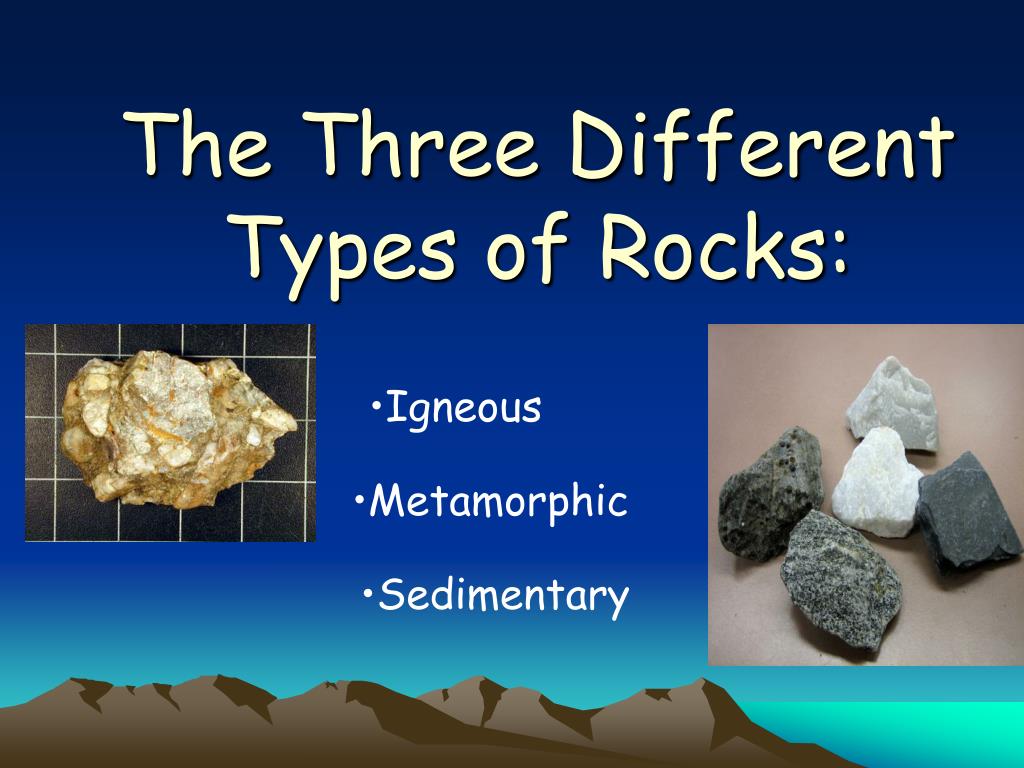
PPT The Three Different Types of Rocks PowerPoint Presentation, free
Andrew Alden Updated on February 24, 2020 Any good rockhound is bound to come across a rock that he or she has trouble identifying, especially if the location of where the rock was found is unknown. To identify a rock, think like a geologist and examine its physical characteristics for clues.
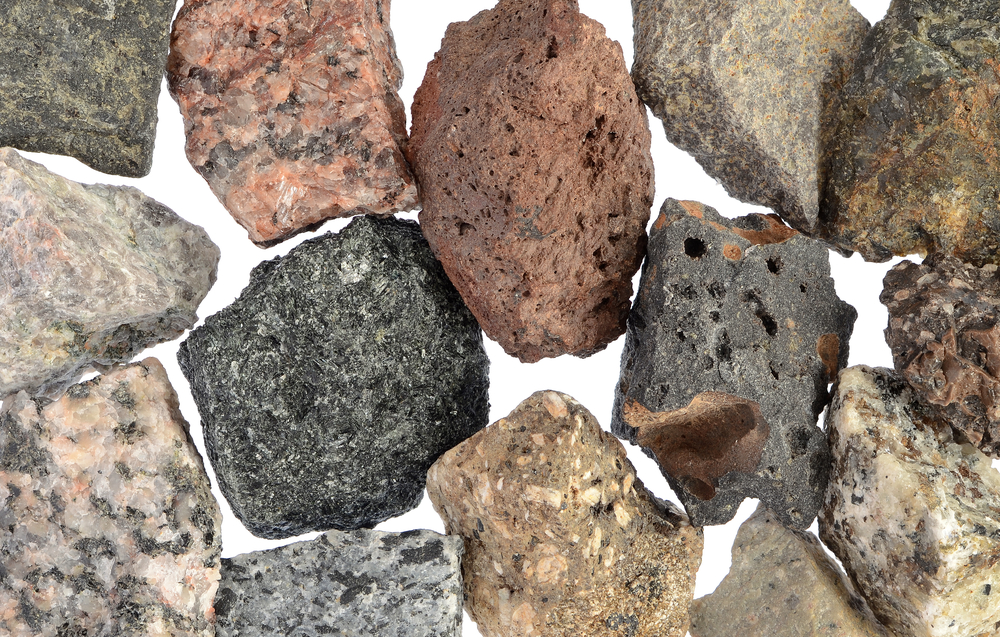
Types of Rocks Science Facts
1 / 15 Etna's Fireworks Italy's Mount Etna provides a vivid image of one of the birthplaces of igneous rock during a night eruption. Igneous rock forms when magma cools and solidifies. (Lava is.

rocks different types Rocks & Minerals Poster ESL Pinterest
How to Identify the 3 Major Types of Rocks By Andrew Alden Updated on December 23, 2018 In geology, pictures of rocks can be used to help you best determine which of the three major types a particular rock belongs to: igneous, sedimentary, or metamorphic.

3 Common Types of Rocks on Ocean Floor
There are two basic types of metamorphic rocks. Foliated metamorphic rocks have a layered or banded appearance that is produced by exposure to heat and directed pressure. Examples of foliated rocks include: gneiss, phyllite, schist, and slate. Non-foliated metamorphic rocks do not have a layered or banded appearance.
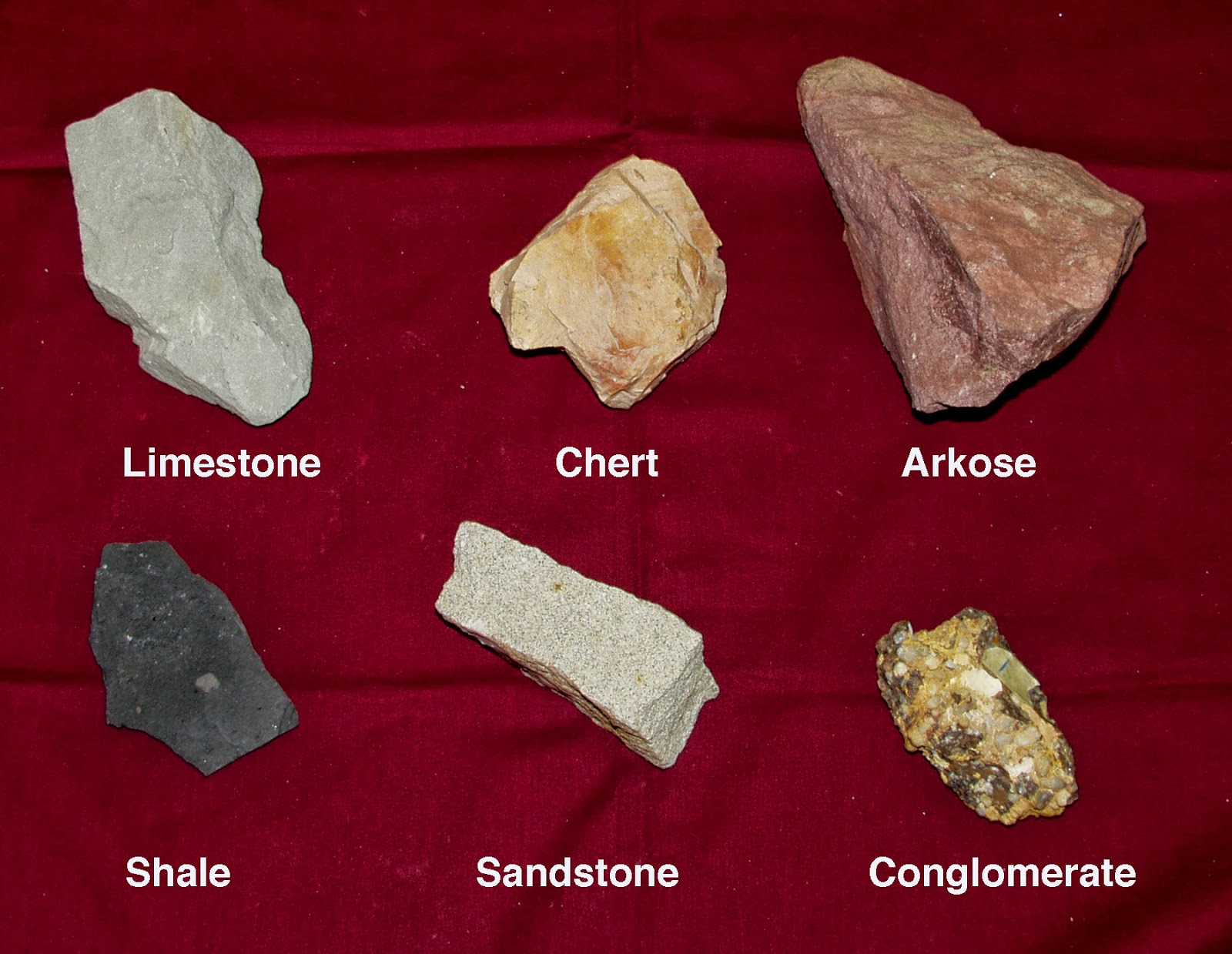
Oceanography Sedimentary Rock
There are three major types of rock: igneous rock, metamorphic rock, and sedimentary rock. Igneous rocks A sample of andesite (dark groundmass) with amygdaloidal vesicles filled with zeolite. Diameter of view is 8 cm. Adakite - Volcanic rock type Andesite - Type of volcanic rock Alkali feldspar granite - Type of igneous rock rich in alkali feldspar

3 Main Types Of Rocks
The rock cycle is a series of processes that create and transform the types of rocks in Earth's crust. There are three main types of rocks: sedimentary, igneous, and metamorphic. Each of these rocks are formed by physical changes—such as melting, cooling, eroding, compacting, or deforming —that are part of the rock cycle.
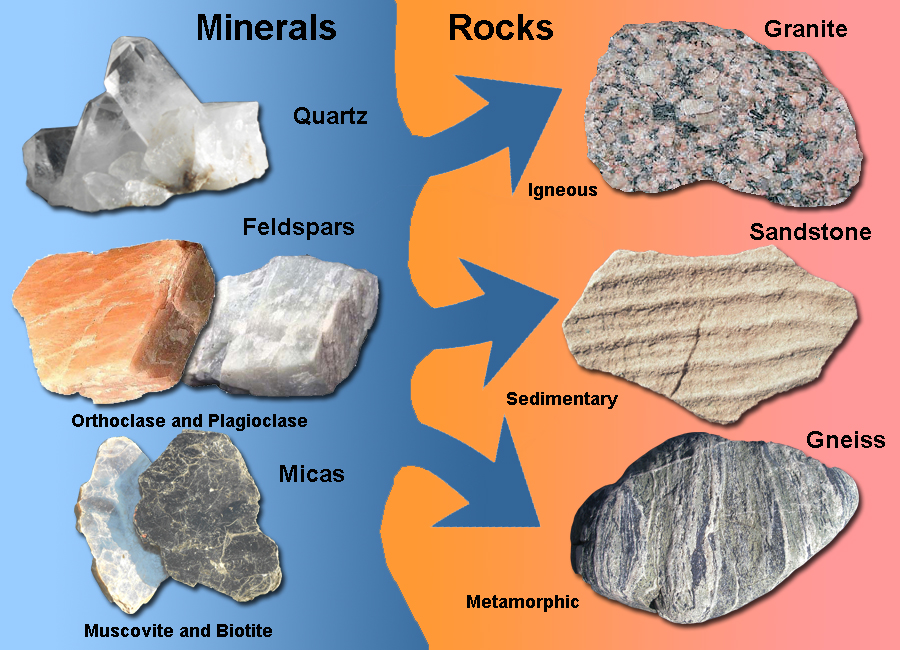
How Could the Same Minerals Form Different Rocks? Geology In
Three Types of Rock Rocks fall into these three groups: Igneous , Sedimentary , and Metamorphic Igneous rocks are formed from melted rock deep inside the Earth. Sedimentary rocks are formed from layers of sand, silt, dead plants, and animal skeletons. Metamorphic rocks formed from other rocks that are changed by heat and pressure underground.
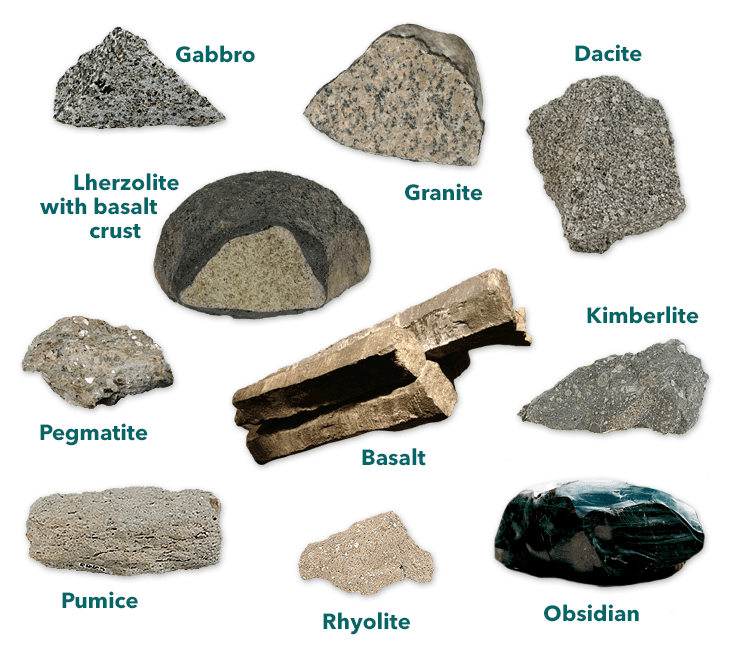
3 Types of Rock Igneous, Sedimentary & Metamorphic AMNH
There are three basic types of sedimentary rocks. Clastic sedimentary rocks form from the accumulation and lithification of mechanical weathering debris. Examples include: breccia, conglomerate, sandstone, siltstone, and shale. Chemical sedimentary rocks form when dissolved materials preciptate from solution.

I made a guide explaining how different types of rocks got their names
There are four main types of foliation, all of which describe a specific type of texture and are an indicator of the degree of metamorphism a rock has undergone. Slaty - Parallel layering of fine-grained, platy minerals Schistose - Parallel layering of coarse-grained minerals

HIGEOTICS Main types of rocks
Some important igneous rocks from left to right: gabbro, andesite, pegmatite, basalt, pumice, porphyry, obsidian, granite, and tuff. Still, there is a fundamentally sound reason to talk about such a vague concept as a rock type because these assemblages occur again and again in many different locations.